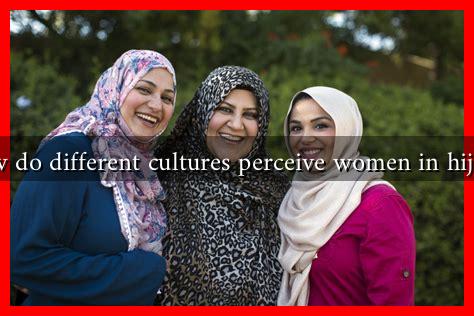-
Table of Contents
- How Do Different Cultures Perceive Women in Hijabs?
- The Hijab: A Symbol of Faith and Identity
- Western Perspectives: Stereotypes and Misunderstandings
- Middle Eastern and South Asian Perspectives: Empowerment vs. Enforced Modesty
- Case Studies: Global Perspectives on the Hijab
- Conclusion: Bridging Cultural Divides
How Do Different Cultures Perceive Women in Hijabs?
The hijab, a traditional headscarf worn by many Muslim women, is a symbol of faith, identity, and cultural heritage. However, perceptions of women in hijabs vary significantly across different cultures and societies. This article explores these diverse perspectives, examining how cultural, social, and political contexts shape the understanding of women who choose to wear hijabs.
The Hijab: A Symbol of Faith and Identity
For many Muslim women, the hijab is not merely a piece of clothing but a profound expression of their religious beliefs and personal identity. The Quran encourages modesty, and wearing a hijab is often seen as an act of devotion. However, the interpretation and significance of the hijab can differ widely:
- Religious Significance: In many Islamic cultures, the hijab is viewed as a sacred obligation, a way to honor God and adhere to Islamic teachings.
- Cultural Identity: In some regions, the hijab serves as a marker of cultural identity, distinguishing women within their communities.
- Personal Choice: For many women, wearing a hijab is a personal choice that reflects their autonomy and empowerment.
Western Perspectives: Stereotypes and Misunderstandings
In Western societies, the perception of women in hijabs is often clouded by stereotypes and misconceptions. The hijab can be associated with oppression, leading to a polarized view of Muslim women. Some common perceptions include:
- Victims of Oppression: Many Western narratives portray women in hijabs as oppressed or forced to wear the garment, ignoring the agency of those who choose to wear it.
- Symbol of Extremism: The hijab is sometimes linked to radicalism, particularly in the context of terrorism, which can lead to discrimination and Islamophobia.
- Exoticism: Women in hijabs may be viewed through an exotic lens, reducing their identities to mere symbols rather than recognizing their individuality.
These perceptions can have real-world consequences, as evidenced by studies showing that Muslim women wearing hijabs often face discrimination in employment and social settings. According to a report by the Pew Research Center, 62% of Muslim women in the U.S. have experienced discrimination due to their attire.
Middle Eastern and South Asian Perspectives: Empowerment vs. Enforced Modesty
In many Middle Eastern and South Asian countries, the hijab is a complex symbol that can represent both empowerment and enforced modesty. The cultural context plays a significant role in shaping these perceptions:
- Empowerment: In some communities, women wear the hijab as a form of empowerment, reclaiming their identity and challenging Western notions of beauty.
- Enforced Modesty: Conversely, in certain countries, laws mandate the wearing of the hijab, leading to debates about personal freedom versus cultural norms.
- Generational Differences: Younger generations may have differing views on the hijab, with some embracing it as a choice while others reject it as a symbol of patriarchal control.
For instance, in Iran, the hijab is mandatory, and women who defy this law face severe penalties. In contrast, in countries like Turkey, the hijab has been a subject of political contention, with debates surrounding its place in public life.
Case Studies: Global Perspectives on the Hijab
Several case studies illustrate the diverse perceptions of women in hijabs across the globe:
- France: The ban on hijabs in public schools has sparked significant debate about secularism and religious freedom, highlighting the tension between cultural integration and personal expression.
- United Kingdom: In the UK, the hijab is generally accepted, with many women wearing it as a symbol of pride. However, incidents of hate crimes against Muslim women have increased, reflecting underlying societal tensions.
- Indonesia: As the country with the largest Muslim population, Indonesia showcases a more accepting view of the hijab, where it is often worn as a fashion statement alongside traditional attire.
Conclusion: Bridging Cultural Divides
The perception of women in hijabs is a multifaceted issue influenced by cultural, social, and political factors. While some view the hijab as a symbol of oppression, others see it as a powerful expression of identity and faith. Understanding these diverse perspectives is crucial in fostering dialogue and promoting respect for individual choices. As societies become increasingly multicultural, it is essential to challenge stereotypes and recognize the agency of women who choose to wear the hijab. By doing so, we can bridge cultural divides and create a more inclusive world.
For further reading on this topic, you can explore resources from the Pew Research Center and other academic studies that delve into the complexities of cultural perceptions surrounding the hijab.


